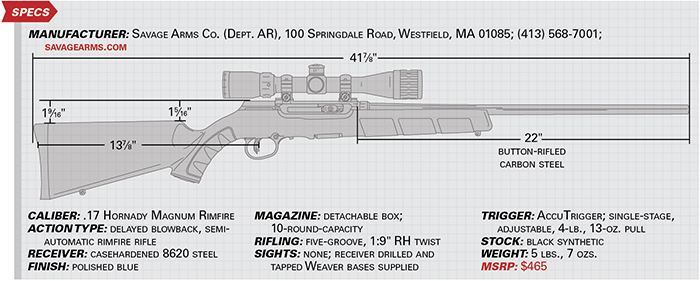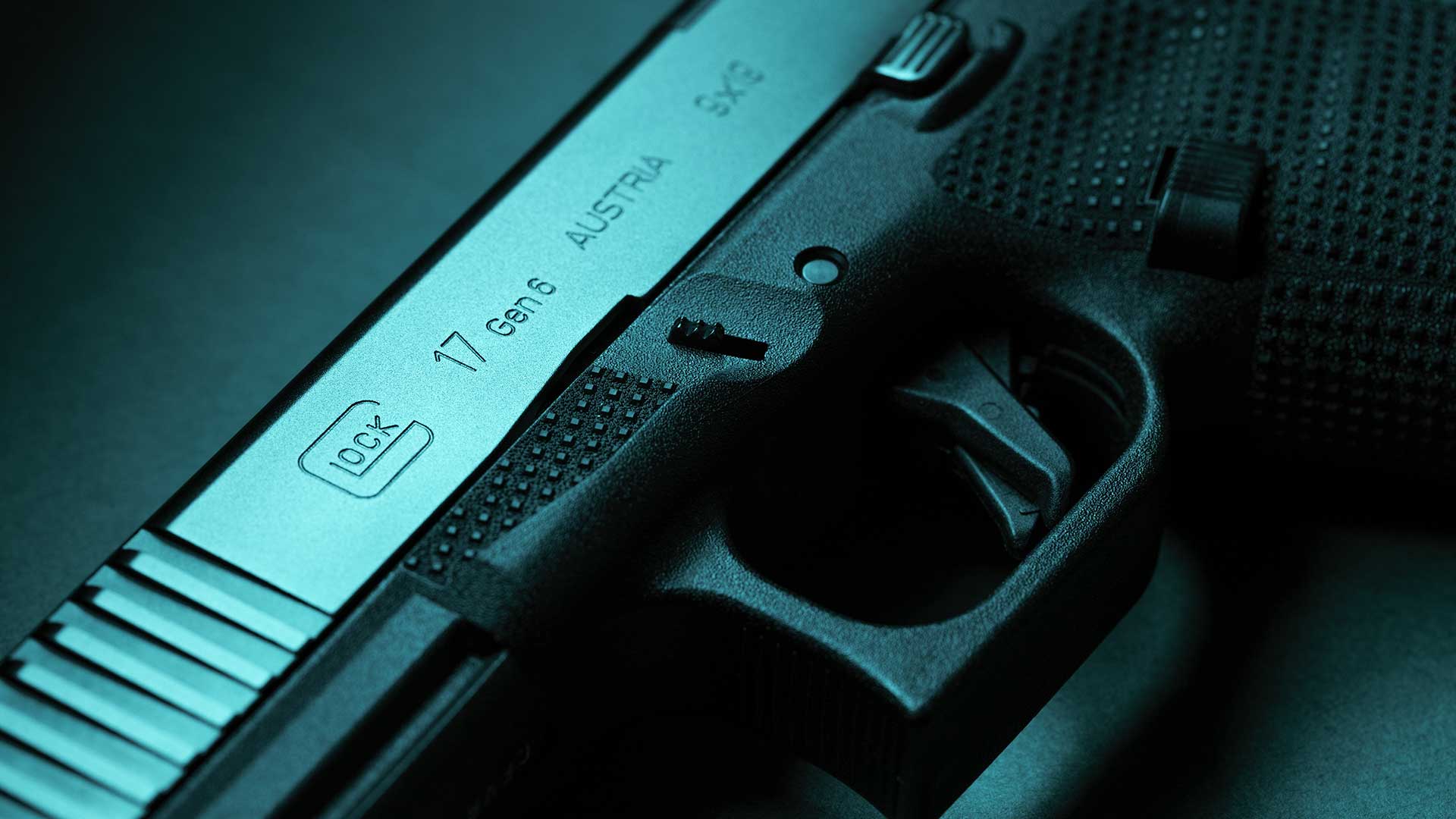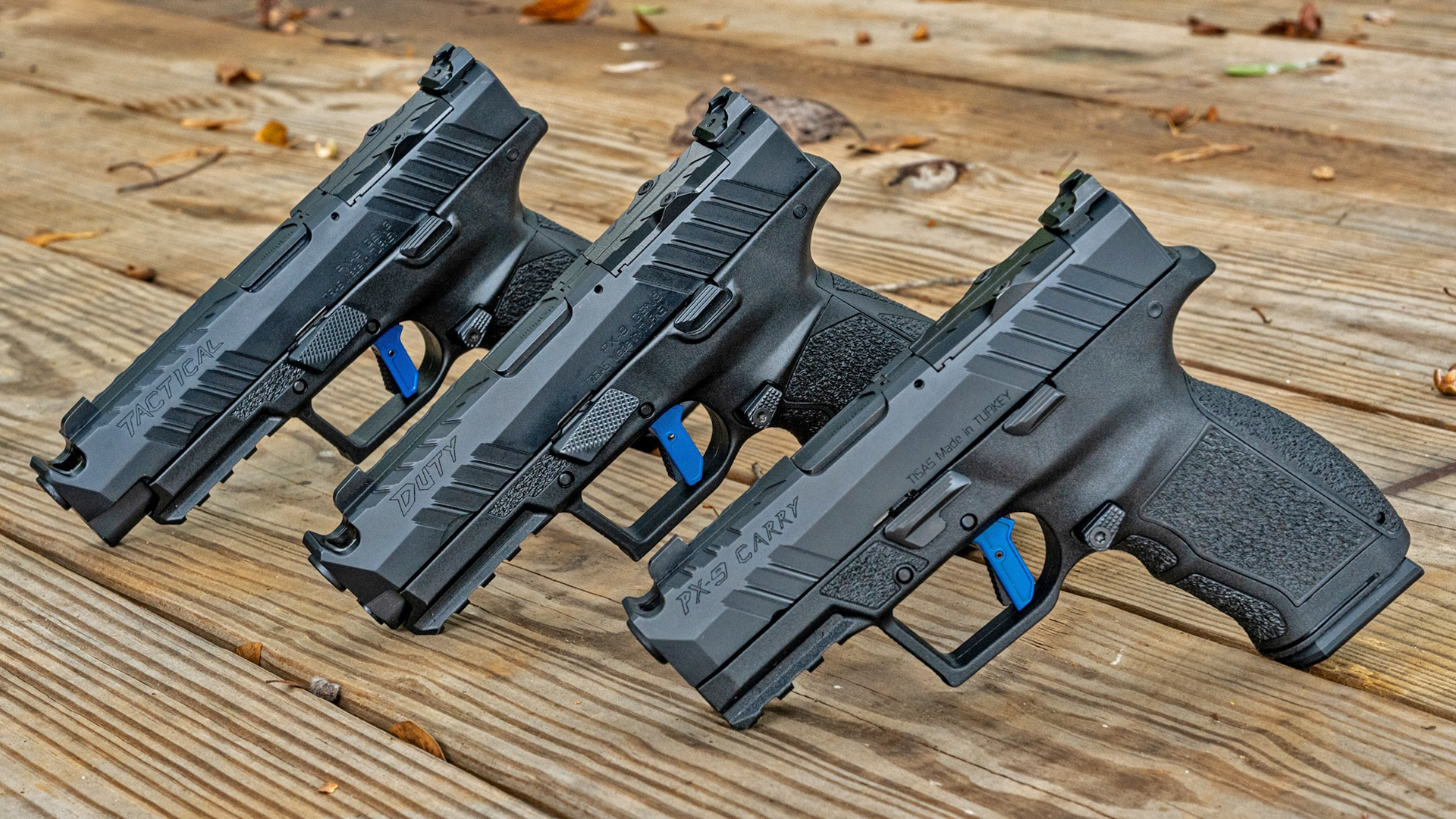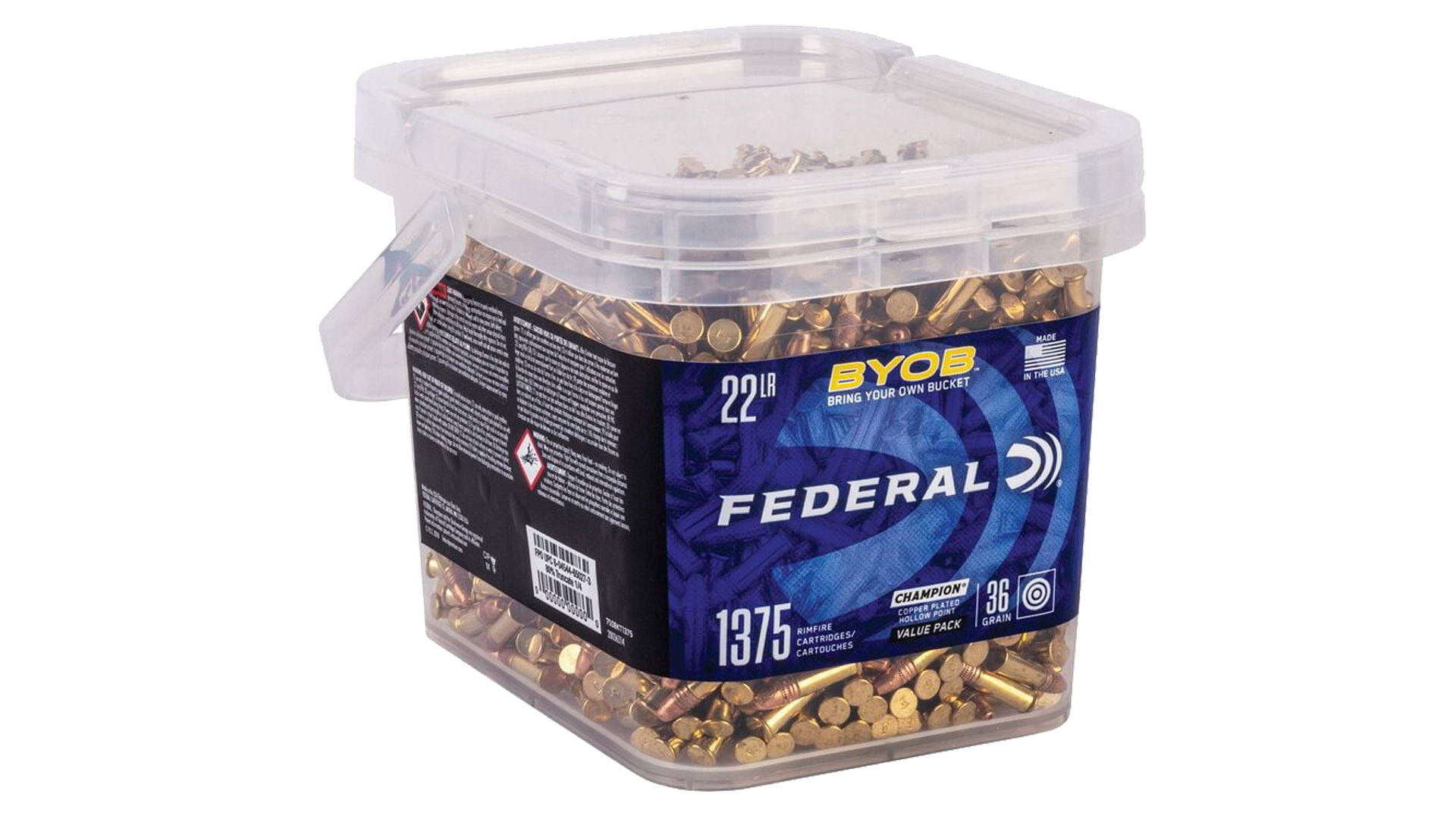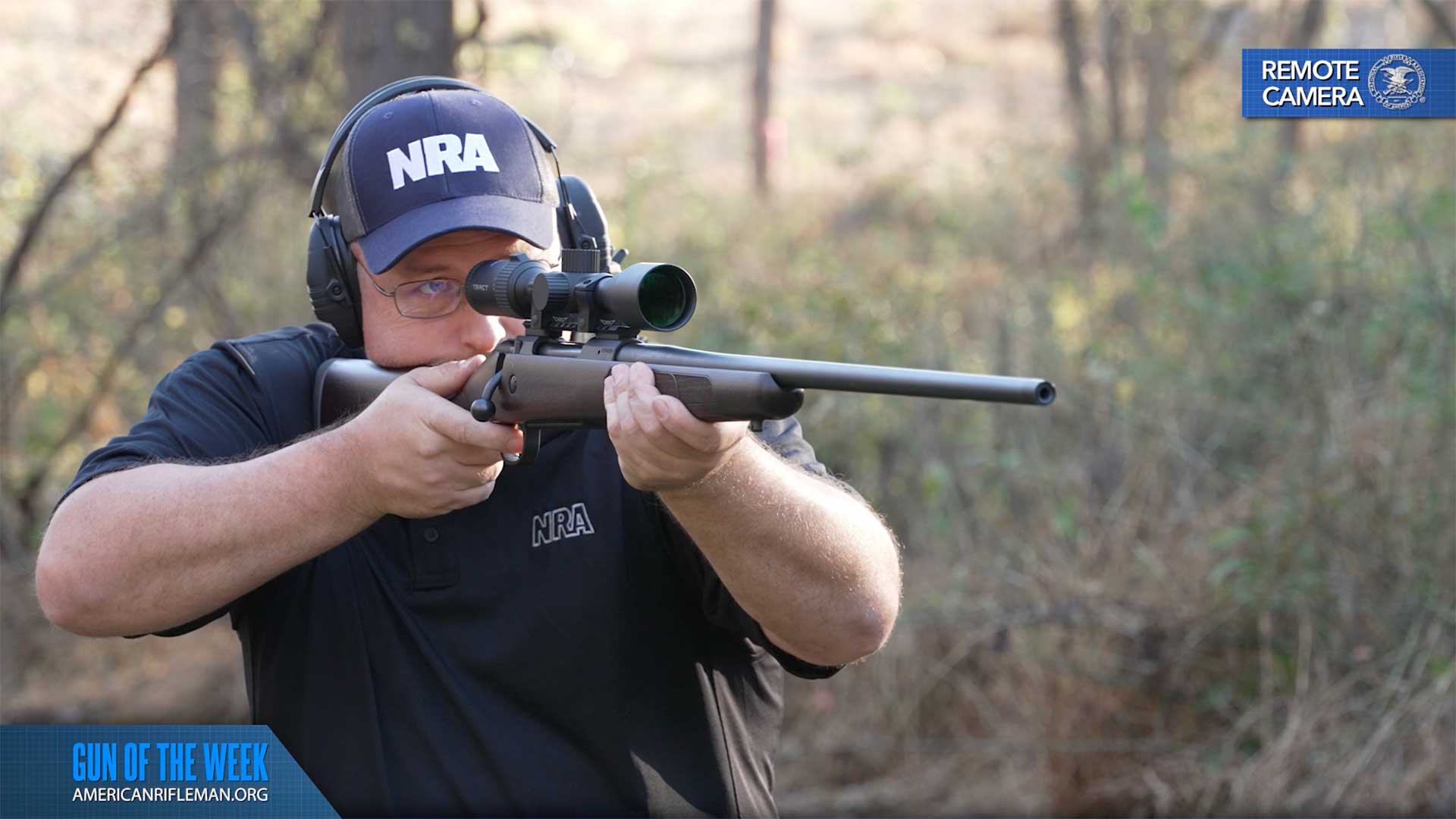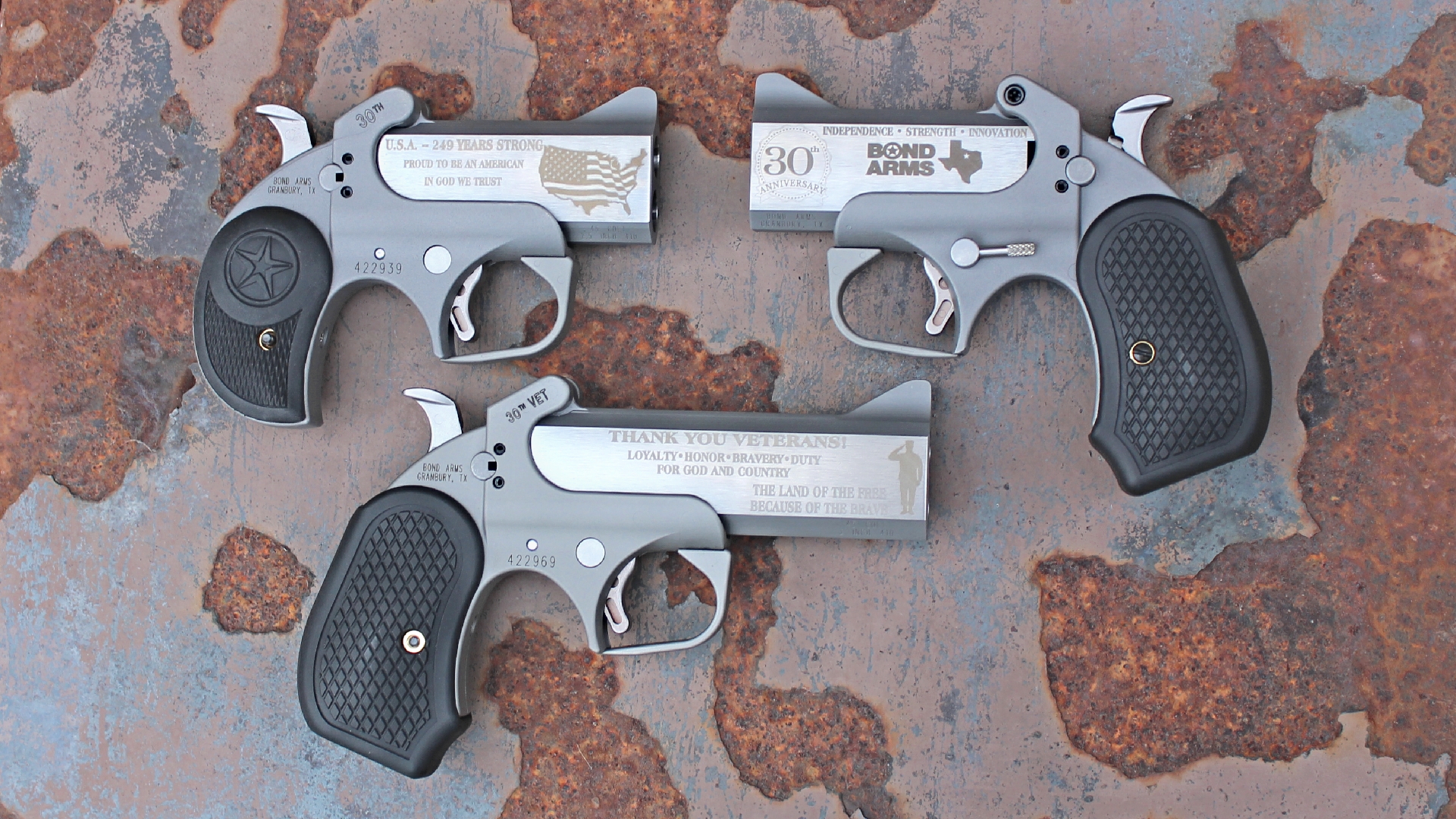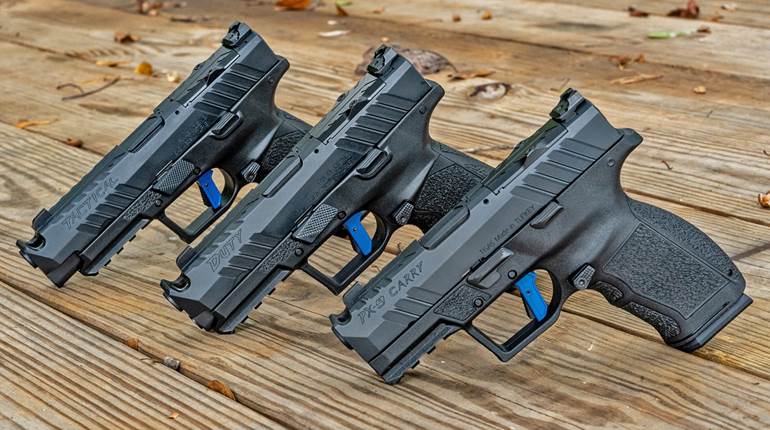
It’s a wonder that rimfire cartridges work at all. In fact, when it comes to semi-automatic rimfire guns chambered for .17 Hornady Rimfire Magnum (HMR), some designs from big names in gunmaking simply didn’t. That’s why the introduction of the Savage A17 rifle (and accompanying CCI A17 ammunition, which is actually about 100 feet per second faster than other .17 HMR loads) is such a big deal—Savage has succeeded where others failed or simply walked away.
When introduced, we thought so much of the .17 HMR we put a single, diminutive cartridge all by itself on “the white cover,” calling it “The Little Cartridge That Could” (March 2002, p. 48). Necking down the .22 Winchester Magnum Rimfire (WMR) case to .17-cal. with a 25 degree shoulder and stoking it with Hodgdon Lil’ Gun powder resulted in a 17-gr. V-Max bullet moving out at more than 2550 f.p.s.—a huge and efficient leap in rimfire ballistics. Thanks to then-new high-energy propellant and a modern, jacketed bullet with a good ballistic coefficient (not a misshapen hunk of lead from a previous century), the new cartridge was the first 200-yd. rimfire. Marlin and Ruger were in on the development, and both introduced bolt-action rifles concurrently with the cartridge’s launch. Many other companies have since added guns chambered for .17 HMR, but the real payoff for this cartridge was getting it into semi-automatics. After all, a big part of a rimfire’s appeal is affordable, high-volume shooting. So making a semi-automatic .17 HMR should be simple, right?
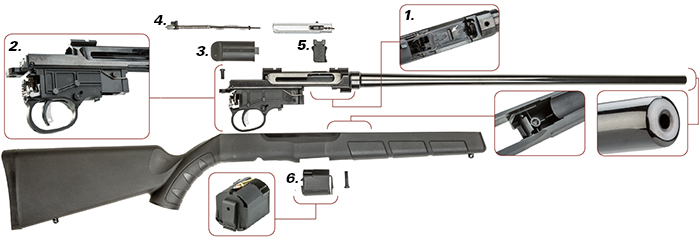
“Not Suitable For Use …”
“Remington has been notified by its supplier of .17 HMR ammunition that .17 HMR ammunition is not suitable for use in semi-automatic firearms. The use of this ammunition in a semi-automatic firearm could result in property damage or serious personal injury.” Semi-automatics? You mean all semi-automatics? That was back in 2009, when Remington recalled every Model 597 Magnum rifle in .17 HMR it made from 2003 to 2007.
In response, the cartridge’s inventor, Hornady, not being a gunmaker, advised owners of .17 HMR rifles to check with their manufacturers. Steve Hornady himself weighed in with the following: “We believe .17 HMR ammunition is manufactured to the highest standard of care and quality and performs within the specifications established for .17 HMR ammunition and is consistent with SAAMI standards for ALL ammunition. We are not firearms manufacturers, and we believe the firearms manufacturers are solely the ones responsible for determining if and how they should market and sell a model or type of firearm.” CCI, which produces hundreds of millions of rimfire rounds every year, including most of the market’s .17 HMR, stated: “Do not use .17 HMR ammunition in semi-automatic firearms without consulting with your firearm’s manufacturer.”
So what happened? With blowback-operated guns, the weight of the bolt and the force of the recoil spring are supposed to keep the bolt closed long enough for the bullet and expanding gases to escape the barrel and for pressure to drop to safe levels before the bolt opens.
Ruger introduced its straight-blowback 10/17, a .17 HMR semi-automatic based on the 10/22 Magnum, in 2004. But because of the cartridge’s pressure concerns, the gunmaker strangled the .17 HMR darling in its crib. The rifle, cataloged but never sold, met its ignominious end by the time of the company’s 2006 annual report. Ruger had offered the 10/22 Magnum from 1999 to 2006, but quietly abandoned it, too.
The cartridge was blamed by the gun manufacturers, and it was pretty clear that, at times, cartridges were discharging while the case was unsupported—either firing too early before the actions were fully closed or opening too quickly—and this led to potentially serious safety issues. That gas has to go somewhere, and through a thin piece of unsupported brass was the easiest path. Two other possibilities for .17 HMR irregularities were bore obstructions (likely from squib loads causing a jacketed bullet to stick in the barrel) or case failures at the rim—rare but possible.
Other makers offer blowback-operated .17 HMR semi-automatics, but they manage it only by manipulating bolt weights and springs. Magnum Research offers its blowback-operated Barracuda with a heavy bolt and springs, and Volquartsen catalogs its TF Rifle in .17 HMR, but with a counterweight to keep the bolt closed. Then there is the Alexander Arms AR-style .17 HMR offered both as an upper and as a complete firearm. It is a blowback that worked flawlessly in recent tests (October 2014, p. 84), but it was engineered specifically for the .17 HMR.
So, was it a gun problem or a cartridge one?
Rimfire Realities
When it comes to rimfires, take everything we know about the better mousetrap—which is the boxer-primed, center-fire cartridge—and throw it out the window. The humble rimfire cartridge in America can trace its roots to Daniel B. Wesson and Horace Smith’s first revolver chambered for .22 Rimfire. The rimfire cartridge predates the typewriter, yet remains little changed in how it actually works. And it’s inexpensive to produce in quantity—sometimes mere pennies a round—much cheaper than its center-fire cousin. That’s the appeal of rimfire. That and not needing to diligently police brass for reloading.
It is based around a thin, fragile piece of sheet brass punched into shape as a cartridge case through several forming operations. Then highly explosive priming compound is deposited in the case, the case is spun until the wet priming compound fills the hollow case rim and then is allowed to dry. Propellant and projectile are then added using high-speed machines. The powder charges are small. The rim has to be thin enough so that it can be crushed, setting off the priming compound by a hit on the rim. The malleable brass—pressed outward by the expanding gases created by the propellant—has to be contained by the chamber walls and a closed bolt face. When the case is not fully supported, problems can arise—gas will find the easiest way out.
Short cartridges with straight case walls work best in straight blowback-operated firearms. Long cartridges with bottlenecks are not so simple. In addition to more space for gunpowder, which ups the pressure, the .22 WMR and .17 HMR are longer than the .22 Long Rifle, and that creates more surface area in the chamber for the brass case to grip, which increases chamber friction. So you have a cartridge that is relativity fragile (about 0.050" thick), difficult to extract with a case rim that can be torn off by its extractor and that operates at 26,000 p.s.i. Also, unlike a center-fire rifle case, there is no way to anneal a case shoulder once a rimfire case is primed. The shoulder on a .17 HMR case is formed after priming.
This is not a condemnation of the rimfire, just an explanation of the limitations of the case construction. Literally tens, if not hundreds, of billions of rounds of rimfire ammunition have been made, and hundreds of millions are manufactured and fired every year.
The bottom line is that when a rifle does not meet expectations, the gunmaker typically blames the ammunition company. Conversely, if a cartridge does not work in a particular gun, the ammunition manufacturer points its finger at the gunmaker. That option was taken off the table when Alliant Techsystems (ATK) acquired Savage Arms in 2013, now both are happy members of the rebranded Vista Outdoor family. That means there could be no finger-pointing at the dinner table.

Say Hello To The Chicklet
More than a year before being picked up by ATK, Savage’s engineers had worked out a solution for the .17 HMR semi-automatic rifle. Standard blowback wasn’t the answer for them—the bolt had to remain fully closed long enough for the pressure to drop to a safe level. So, how did Savage do it? The same way Kel-Tec made the .22 WMR work with its delayed-blowback/recoil-operated hybrid PMR-30 (November 2011, p. 80) and its CMR-30 carbine—through its own brand of delayed-blowback operation.
The heart of the new Savage is markedly different, though. Referred to as a mechanically delayed blowback, the A17 is likely the most tested new rimfire rifle to hit the market.
It’s good when your new corporate parent owns a couple ammunition companies. After CCI’s engineers saw the A17, they decided to upgrade the .17 HMR cartridge and optimize the ammunition for the rifle, thus CCI A17 was born. “Being part of an ammo company, we were in a great position,” said Savage’s Bill Dermody. “More than 500,000 rounds were fired between CCI and Savage, and every test was replicated at both facilities.”

So here is how it works. The steel bolt, left in the white, measures 0.90" wide, 0.58" tall and 3.62" long (save for the extractor). Its top has what Savage engineers publicly call the “interrupter lug”—which, when describing it informally, they call the “Chicklet.” If the bolt is all the way forward, the lug is locked in the up position—pushing on the bolt will not move it. The portion of the lug that protrudes above the bolt is 0.405" wide and 0.170" thick, and it is pushed into a recess in the underside of the top of the receiver. The lug has angled surfaces cut on its top, front and back. The bolt handle nests into the interrupter carrier’s right side, and the interrupter is locked until the carrier and bolt handle start to move rearward under recoil, providing a few milliseconds of extra closure. Upon firing, the bolt wants to move rearward while the recoil spring is pushing the carrier and handle forward. Once the carrier moves, the lug cams downward out of the way, allowing straightforward blowback operation. This momentary hesitation keeps the gun closed just long enough for pressures to drop. The recoil spring and bolt guide rod (it does both jobs) passes through the interrupter lug, and if the lug is not in its topmost, or engaged position, the firing pin cannot reach the case rim, preventing out-of-battery fire.
Putting It All Together
Not only did the rifle have to work, it had to be affordable. Frankly, the bolt-action .17 WSM B.MAG wins high marks in the value price category, but in my view it was beaten severely—within an inch of its affordable life—by the ugly stick. While the A17 has modern looks, it is not an aesthetic abomination. Besides the barreled action, the A17 strips down to just 11 parts. Granted, some of those parts are assemblies containing many little parts, but it is really an impressive engineering feat.
The A17 is made in Westfield, Mass., although some parts are supplied by vendors, and the 1.28" wide, 8.34"-long rectangular receiver is of 8620 casehardened steel. It and all the other major metal components (except the bolt) have an even polish with nice, old-school bluing. The polish comes from a tumbling process that leaves no tool marks inside or out. Think of the tumbler you use for reloading only larger. A Savage-style barrel nut secures the 24" medium-contour barrel to the stock. The barrel tapers from 0.88" at its attachment nut to 0.56" at the muzzle, which has a rounded crown.

The back of the receiver above the stock ends behind the rear scope base and the last 2¾" you see is actually a polymer cover (styled as a homage to the venerable Model 64). The fire-control parts are mounted in a polymer housing attached to the bottom rear of the receiver—the trigger guard is part of this assembly, not the stock.
Disassembly is a little unusual, and Savage engineered it to make cleaning from the breech easier without the need to fully disassemble the rifle. There is a small hole in the rear of the cover, and pressing in with a 1/8" punch clears the rear of the recoil spring from its recess in the receiver. Lift up on the cover, and it comes right off. Then, press in on the rear of the recoil spring guide rod and lift it out to the rear. At this point the bolt handle, retained by the guide, typically falls out. I give the bolt handle high marks because it has a big, ribbed, easy-to-grip polymer over sleeve, and it cannot be installed backward due to lugs on its underside. It is retained by the recoil spring guide rod, which passes through its right side.
There is a single hook extractor, powered by two coil springs, on the bolt’s right side with a rim guide on the left. The ejector, mounted in the receiver, is fixed, and not unlike that of an M1911 pistol in shape.
The black, injection-molded stock has modern lines with three raised areas on the fore-end that aid gripping. Too, the thin wrist has molded-in recesses. In Johnson Model of 1941 rifle fashion, the stock flairs out around the 10-round-capacity magazine then tapers rearward of it. Devoid of iron sights, the A17’s comb is optimized for scope use, and its butt is topped by a very generous, soft recoil pad. Sling swivel studs are standard, and interestingly, there is a removable barrel channel insert in the stock channel, so look for heavier-barreled variants in the future.
Forward of the magazine well, a pillar-bedded (it looks like thin tubing) stock screw secures the action and stock from the underside. There is no recoil lug, but a molded lug projects up from the stock against the receiver’s front face. Another screw comes down through the receiver and into the stock at the rear.
Depressing the tab on the front of the magazine allows the 10-round-capacity rotary unit to drop out into the hand. The release is molded integrally with the front polymer portion of the magazine body. If it seems a little flimsy, that’s because the tab is designed to shear in an overpressure situation, allowing the magazine to leave the gun and the gases to escape through the well. The magazine is similar to that of the B.MAG chambered in .17 WSM, although scaled for the smaller .17 HMR cartridge, with a metal back and polymer front. Feeding was excellent, although you need to make sure you press the magazine in until it clicks when inserting it into its well. My guess is that a 25-rounder from fellow Vista stablemate Champion is in the works.

Savage includes its pioneering, user-adjustable AccuTrigger, which delivered a 4-lb., 13-oz. trigger pull. A hammer- and trigger-blocking safety is at the top front of the trigger guard. In front of that is the bolt lock. Depressing it with the bolt retracted locks the bolt open.
The rifle was fired off sandbags at 50 yds., with a Bushnell Banner 3.5-10X 36 mm riflescope in Weaver rings. Accuracy results with both CCI loads, the CCI A17 and TNT, as well as the Hornady .17 HMR load, are shown in the accompanying table. The new CCI A17 ammunition is said to match the 26,000 p.s.i. MAP thanks to improvements in propellant technology. The A17 did deliver about 100 f.p.s. more velocity and 30 more ft.-lbs of energy than its competitors’ average. Note that even though the gun is called the A17, it is still chambered for the .17 HMR and is safe to fire with the latter, too. Accuracy, as has been the case with every .17 HMR we have tested, was impressive, with five-shot groups averaging a mere 1.09". The gun handled well, the stock’s ergonomics were top-notch for both bench and field shooting, and I found myself scrambling to find more and more .17 HMR to feed through it.
In its goal of achieving an affordable, safe, accurate, semi-automatic .17 HMR, Savage has succeeded. The rifle works and works well. Other makers previously tried to make their existing designs work with the .17 HMR cartridge; Savage devised a new platform around the cartridge and its known limitations. It’s no wonder that it functions, but that it does so consistently and at a bargain price—that’s the real trick.
